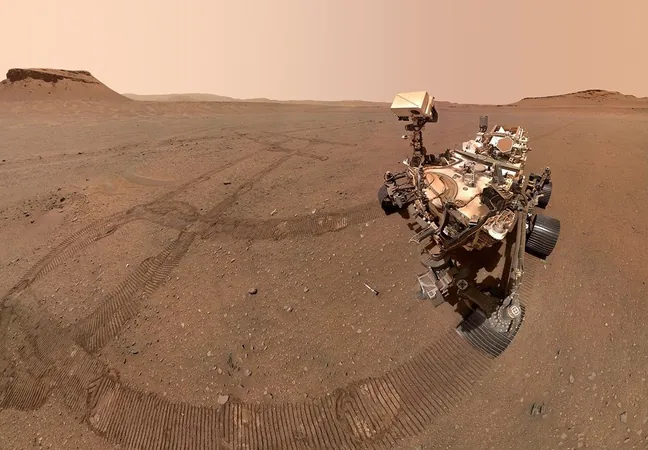
Perseverance Rover Tackles Steep Terrain Amid Sample Supply Challenges
2024-11-10
Author: Siti
Overview of Perseverance's Mission
NASA's Perseverance Mars rover is currently on a thrilling yet arduous journey as it embarks on its fifth science campaign, the most ambitious to date. This leg of the mission has involved scaling the steep western rim of the Jezero Crater, with the rover expected to reach the summit—known as "Lookout Hill"—in early December 2023.
Challenges Faced on the Terrain
Navigating the challenging terrain has presented unexpected difficulties. Contrary to initial assessments, the crater's surface is primarily composed of loosely packed dust and sand, topped with fragile crusts that have proven slippery for the rover’s wheels. On several occasions, Perseverance has managed to cover only about half the distance it could typically achieve on more stable ground. A particularly fierce climb saw progress dwindle to just 20% of the planned route.
Strategies for Improvement
Camden Miller, a route planner at NASA’s Jet Propulsion Laboratory (JPL) in California, highlighted the unique challenges Perseverance faces, stating, “This is the first time one had to handle both steepness and slipperiness on this scale. For every two steps forward, we seem to take at least one step back.” This necessitated a collaborative effort among the rover team to devise strategies to improve traction and manage the rover’s maneuvers effectively.
In early October, team members directed the rover to experiment with various driving techniques. Among these was the unconventional method of driving backward, proven to yield better traction thanks to Perseverance’s suspension system. The rover also attempted cross-slope movements and veering toward the northern edge of the crater, where larger rocks may provide better grip. While these strategies showed promise, driving near the northern edge emerged as the most effective approach.
Sample Collection Progress
Meanwhile, Perseverance's scientific mission continues unabated. The rover has been diligently collecting samples from the Martian surface, with a total of 24 sealed sample tubes already deposited on the ground for future retrieval. With additional atmospheric and witness samples included, Perseverance has reached a total of 28 samples, leaving it with 11 empty tubes available for collection, in addition to two empty witness tubes.
Originally, the mission planning called for a minimum of 31 sample tubes; however, foresight led to the inclusion of 12 extra tubes, resulting in a total of 43. Despite careful planning, the rover’s team made the cautious decision to retire two of the empty tubes due to potential risks that could endanger the rover’s internal robotic arm.
Looking Ahead
In advance of the upcoming sixth science campaign, the focus remains on ensuring a successful summit of the Jezero Crater's rim. Upon cresting, Perseverance will proceed to Witch Hazel Hill, which data from orbital surveys suggests may contain significant geological features worthy of study. Comparisons will be made to the previously explored “Bright Angel” site, potentially revealing new insights into the history of Mars.
As Perseverance inches closer to its destination, scientists and engineers closely monitor its progress, ready to adapt their strategies to continue the rover's groundbreaking exploration of the Martian landscape. The stakes are high, but the potential rewards are astronomical, making every inch climbed an achievement in the quest to uncover the secrets of our celestial neighbor.



 Brasil (PT)
Brasil (PT)
 Canada (EN)
Canada (EN)
 Chile (ES)
Chile (ES)
 España (ES)
España (ES)
 France (FR)
France (FR)
 Hong Kong (EN)
Hong Kong (EN)
 Italia (IT)
Italia (IT)
 日本 (JA)
日本 (JA)
 Magyarország (HU)
Magyarország (HU)
 Norge (NO)
Norge (NO)
 Polska (PL)
Polska (PL)
 Schweiz (DE)
Schweiz (DE)
 Singapore (EN)
Singapore (EN)
 Sverige (SV)
Sverige (SV)
 Suomi (FI)
Suomi (FI)
 Türkiye (TR)
Türkiye (TR)